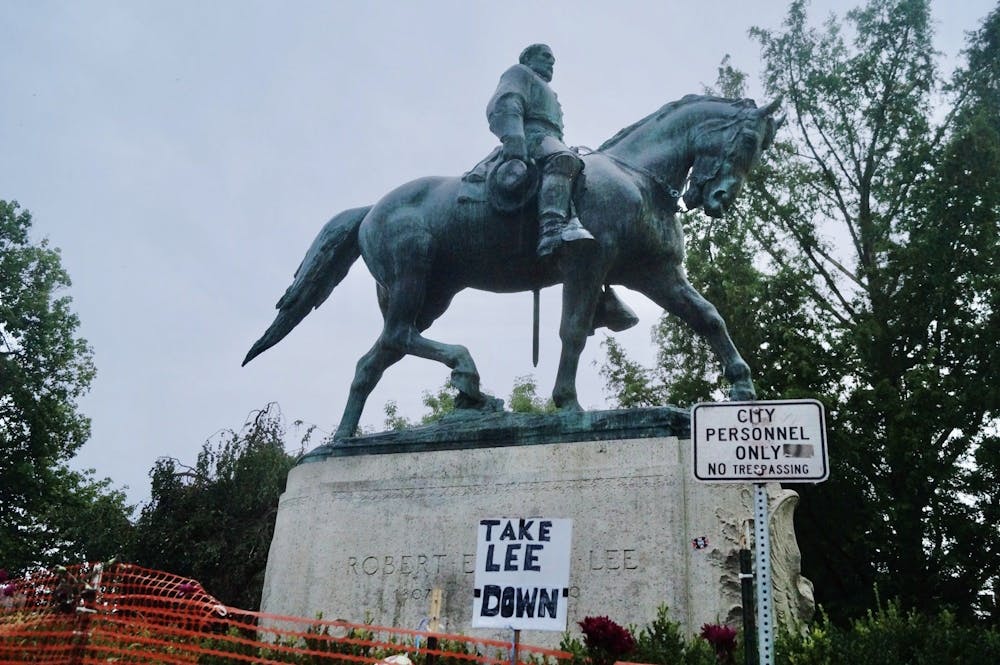In a recent interview, James Grossman, executive director of the American Historical Association, made an important point regarding Charlottesville’s recently-removed Robert E. Lee statue — it was erected in 1924, decades after the fall of the Confederacy. Grossman describes this fact as a “hint” that the monument was not erected to commemorate benevolent southern traditions but rather to “legitimat[e] and perpetuat[e] ideas and structures of race that, in the 1920s, had burrowed themselves into Southern culture.”
Grossman’s point is further evidenced by the fact that in the same year the Lee statue was erected, Virginia enacted two pieces of legislation — the Racial Integrity Act and the Sterilization Act. These policies would undergird a eugenic program responsible for the forced sterilization of 7,200 to 8,300 people who were “deemed by society at the time to be unworthy or unfit to procreate.” The removal of the statue, therefore, marked a significant symbolic victory that was aptly met with celebration.
However, the statue’s removal has also elicited tempered reminders that there is still work to be done. For example, Grossman called the removal of the Lee statue a sign of progress only “if you have a very low bar as to what progress is,” voicing concern that removing statues, rather than changing “laws, attitudes, and institutions … might be seen as enough.” Fellow Opinion Columnist Jessica Moore's column in The Cavalier Daily reminded us that, despite increasing awareness of social justice issues, it “is not the time to stop fighting for equality.” And as the Lee statue came down, Mayor Nikuyah Walker emphasized that, while we were taking “one step closer … we are so far from the perfect union.”
In the spirit of taking more steps toward the “perfect union” Walker describes, the University should grapple with its role in the eugenics program that accompanied the erection of the Robert E Lee statue. In 2001, the Virginia General Assembly condemned the Racial Integrity and Sterilization acts for having provided “a respectable, ‘scientific’ veneer to cover activities of those who held blatantly racist views.” But a less-acknowledged fact is that the University was pivotal in maintaining this veneer — as historian Gregory Dorr has noted, the University served as “an epicenter of eugenical thought, closely linked with the national eugenics movement, and with the Virginia antimiscegenation movement and tied to the state mental health professionals who promoted eugenic sterilization.”
Former University President Edwin Alderman, in keeping with a despicable pledge made in his inaugural speech to uphold “the solemn obligations of racial integrity,” helped make the University this eugenic “epicenter.” During his tenure, the Alderman Library namesake promoted eugenicists such as Harvey Ernest Jordan and Ivey Foreman Lewis to top University positions.
Throughout this time period, the University was churning out young proponents of biological racism and eugenics, offering classes such as Lewis’s Biology C1: Heredity and Eugenics. In one Biology C1 paper written in 1934, a student argued “In Germany, Hitler has decreed that about 400,000 persons be sterilized. This is a great step in eliminating the mental deficients.” A 1931 paper, which Lewis deemed worthy of an A, advocated for eugenics on the grounds that “the future holds the indication that the population, in relatively few years, will be poisoned [and] average intelligence will take a drop."
Echoes of the scientific racism reflected in Biology C1 can still be heard today — even on national television. For example, political scientist Charles Murray, who appeared as a guest on a June 2021 episode of “Tucker Carlson Today,” has — in the apt words of University of Pennsylvania professor Adolph Reed Jr. — popularized ideas that threaten to “presage the return of an updated version of the Lamarckian race theory popular a century ago.” For example, Murray’s most popular work, “The Bell Curve,” poses a hereditarian argument alarmingly similar to that made in the above-mentioned 1931 Biology C1 paper — Murray claims that, due to their genetic inferiority, “Latino and black immigrants are … putting some downward pressure on the distribution of intelligence.”
So, while the statue of Robert E Lee has justly been taken down, the scientific racism that accompanied its erection still has its monuments, both literal — such as in our commemorations of Alderman — and figurative, such as in Murray’s hereditarianism. This fact demonstrates the prescience of Moore’s point that “variations of racism are continually recreated” and must be continuously fought against. On Grounds, an obvious first step in confronting the University’s history of eugenics would be to rename Alderman library. Beyond Grounds, we should heed Walker, Moore and Grossman’s reminders that there is still work to be done by, among other things, combating scientific racism whenever it rears its ugly head.
Robert McCoy is an Opinion Columnist for The Cavalier Daily. He can be reached at opinion@cavalierdaily.com.
The opinions expressed in this column are not necessarily those of The Cavalier Daily. Columns represent the views of the authors alone.







